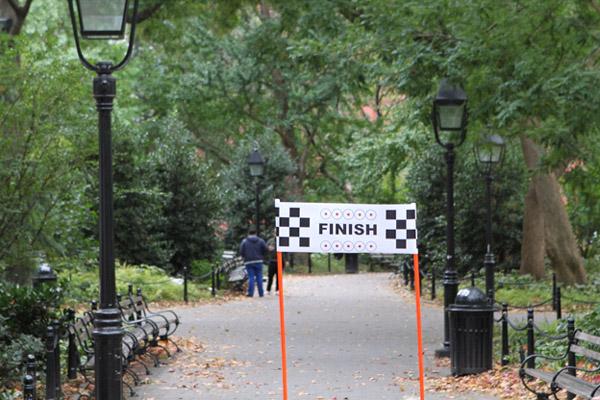One night, I found myself sitting alongside a rubber track in an old gymnasium in Brooklyn, New York. Clipboards in hand and pens at the ready, I was the odd one out—not because I was suited up for science rather than sport, but because sitting around me were some of the fastest men in the world. Here, an elite team of runners called Zenith Velocity gather each week to train.
One member of the group was the fastest man out of Nigeria. Another was the third-quickest Trinidadian, who ran alongside Usain “Lightning” Bolt, the fastest human alive. And a third runner, Lalonde Gordon, was a double Olympic bronze medalist and the first Tobagonian to medal at any Olympic games. Before they quite literally sprinted off their blocks, these world class athletes took some time to talk to me about the strategies they use to trounce the competition. And the lessons they taught me are ones I have taught to hundreds of other people to help them walk faster, run better, and do it all over again.
What my conversations with the Zenith Velocity team revealed was that these record-breaking athletes attributed their success on the track to a very specific way of looking at their visual environments while they ran—and that was to assume a narrow field of view. Although tracking the competition is tempting, every one of the athletes said he narrowed his visual focus on a target he chose up ahead. The shorts of the person in front of him. The curve in the track. A point just beyond the finish line. More than anything else, these runners were confident that this way of orienting their visual attention helps them perform better.
New research that I have published with my colleagues, Shana Cole, Matthew Riccio, and Dustin Duncan, found that although these athletes' accomplishments were unique, the visual experiences that marked their faster paces were not. We conducted a survey of 195 men and women who, on average, were considered overweight based on their body mass index (BMI). We found that those people who more frequently narrowed their visual focus while exercising reported walking or running a mile at a faster pace. To put the difference in perspective, those who reported that they frequently rather than sometimes used a narrowed style of attention, for instance, quickened their pace by a minute and forty-one seconds per mile.
The members of the Zenith Velocity team reported focusing their gaze but also noted that what they set their sights on mattered. In the same way as these pro athletes, exercise hobbyists we questioned reported that the visual appearance of their neighborhoods had a direct impact on the quality of their workouts. Those living in San Francisco, Boston, Washington, D.C., and New York City who reported having interesting things in their neighborhoods that captured their focus reported being more physically active than people who lived in neighborhoods with fewer things that caught their eye.
Identifying the visual tools that quickened the pace for some served as inspiration for others. My research team found that we could teach people to focus their attention more narrowly, a tactic that people could adopt and use well after leaving our lab to improve the quality of their exercise. We trained 61 men and women to adopt a constricted field of view, to imagine that a spotlight shed its light on only one target up ahead. We contrasted tactic this with a natural style of attention in which 60 men and women were asked to look more broadly around them.





